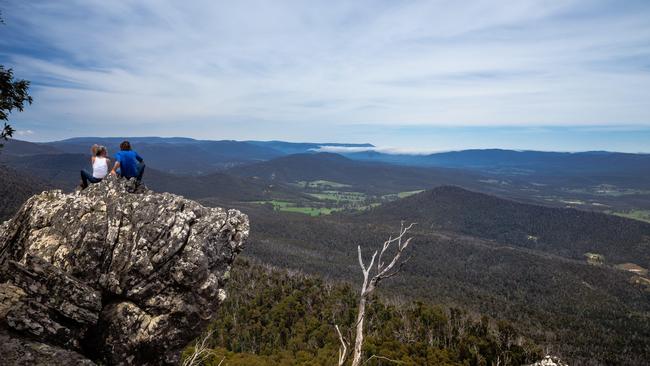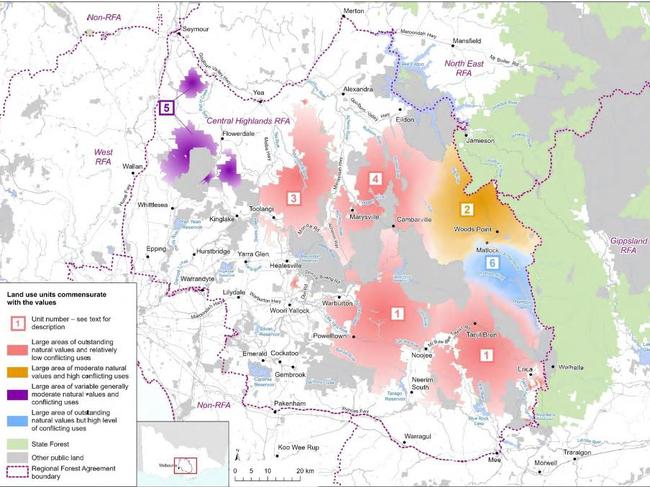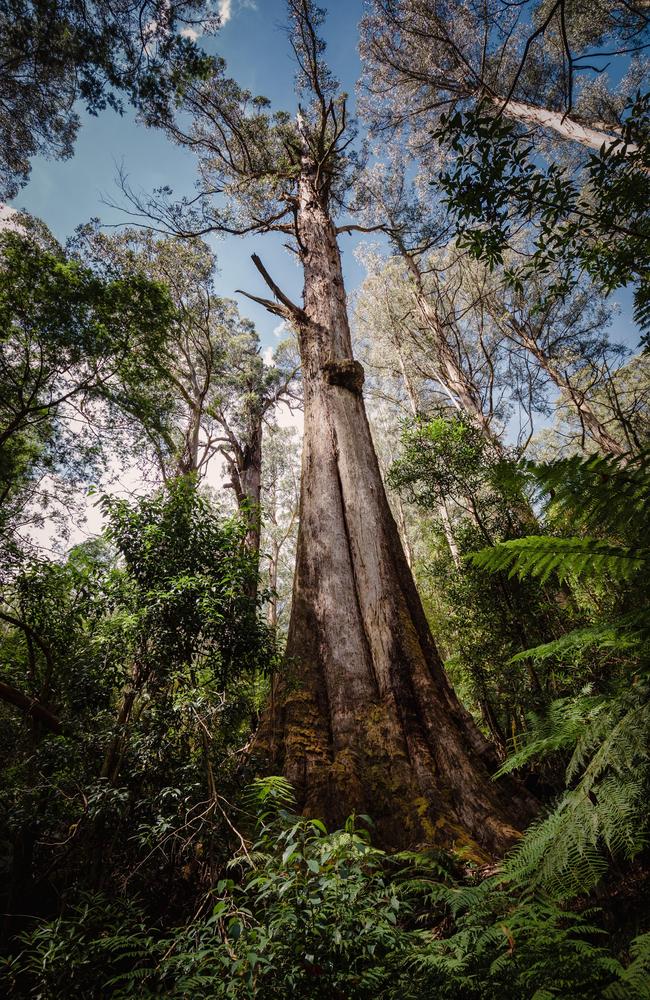Great Forest National Park proposal closer to reality following VEAC interim report release
Advocates say the creation of vast swathes of new national parks in the state’s east would generate money and jobs, but others claim it would only lead to more bureaucratic bumbling.

East
Don't miss out on the headlines from East . Followed categories will be added to My News.
A proposal to create more than 350,000h of national park northeast of Melbourne could represent a “vast” economic opportunity for the state, advocates say, but recreational forest users fear being barred from their pastimes by oppressive government restrictions.
The idea to expand protected areas in the eastern Central Highlands to make a unified ‘Great Forest National Park’ stretching from Healesville to Eildon dates back at least a decade, but has found fresh vigour following the recent release of an interim report by the Victorian Environmental Assessment Council.
The report said forests in the region, home to mountain ash trees and the critically endangered leadbeater’s possum, continue to be threatened by extreme weather and increased human activity, with restoration of state forests “key” in the wake of bushfires and now-ended native logging.
Broadly, the document concluded that linking the Yarra Ranges, Kinglake, Lake Eildon and Baw Baw national parks could be joined with the Bunyip, Cathedral Range and Moondarra state parks by giving certain swathes of land national park status.
Other locations were deemed incompatible with the designation and were better envisioned with different classifications – for example, the VEAC considered areas between the Yarra Ranges and Lake Eildon as possible forest parks or regional parks, which have fewer recreational restrictions.

ANU professor David Lindenmayer is a proponent of the Great Forest National Park, a prospect promising hundreds of jobs and an additional $70m a year for the economy.
He said there was “vast, untapped tourism opportunity” for the state after the “haemorrhaging” of public money by the shuttered timber harvesting industry in the region, so long as the new parks received proper attention.
“When you create a new national park you have to create the infrastructure for people to be able to engage with it,” he said, citing Geeveston in Tasmania and Walpole in WA as examples of reinvigorated towns.
“When that’s done properly it’s really quite amazing what happens in some of these regional areas.
“As soon as you put in a park, there’s this vast tribe of Australians that want to go visit them: they’re called grey nomads and there’s huge numbers of them.”
He said young forests were especially inflammable and that elite firefighting forces wielding the latest technology would be needed to ensure immature vegetation could develop and toughen to fire risk.

Bill Schulz is the creator of the Busher User Groups United group, which has more than 16,000 online members interested in advocating for recreational uses of the land across Victoria.
Mr Schulz said he was concerned the government would simply reclassify land as national park and then “lock it all up”, partly because of a lack of manpower.
“Soon as a national park comes in there are that many restrictions it’s ridiculous,” he said.
“You’ve got to go on specific tracks because other tracks are closed or non-accessible; you can’t walk your dog; you can’t even pick a feather up off the ground.
“You can’t even collect firewood. If we get a bushfire coming through, there’s your fuel.
“The government is broke. How can they afford to bring in more national or state parks and try to maintain them with no money?”
Mr Schulz worried that access for horse and motorbike riding, four-wheel-driving, and hunting would be restricted or stopped entirely, resulting in more destruction by feral animals and reducing tourism interest in the region.
Parks Victoria says most national and state parks are closed for hunting at all times, but hunting is permitted in certain areas with specific rules for each.
“You wouldn’t mind it if you had the access and you had the freedom to enjoy it, but you can’t,” Mr Schulz said.
“Nothing changes except the name and the restrictions: it’s like getting a jar of Vegemite and putting on it ‘strawberry jam’.
“You open it up and it’s still only Vegemite.”

However, Professor Lindenmayer said all such hobbies could be accommodated, and in fact could jump-start lucrative local industries.
“This is a matter of zoning,” he said.
“I don’t want to see people locked out of Country at all.
“I actually think there’s a very, very important need for concentrated feral animal control,” he said with reference to “millions” of roaming sambar deer.
“We not only need to control these populations, but I think there’s an opportunity for a market for wild-caught venison.”
Healesville resident Sarah Rees said one major appeal of more national parks – besides improved accessibility and local patronage – was increased employment, particularly for women, since the dominant industries locally would evolve away from resource extraction, predominantly male in composition.
“The main reason people come to Victoria is for a natural experience,” she said.
“This is an opportunity to showcase the incredible natural assets of the Yarra Ranges and link together a lot of small patches of national park that are resourced better than state forests.”

But, Ms Rees said, the opportunity called for a new funding model for the prospective parks.
“Nature is worth a lot to people and we need to work out what are the different ways that we can create a park potentially using private investment as well as government investment,” she said.
A state government spokeswoman said the VEAC interim report would be a key consideration in community engagement to take place this year.
“Once consultation has been completed, the panel will provide a report to government including recommendations for land categories and future uses,” she said.
The VEAC will provide a final report and economic assessment to the relevant state minister by July 31.





